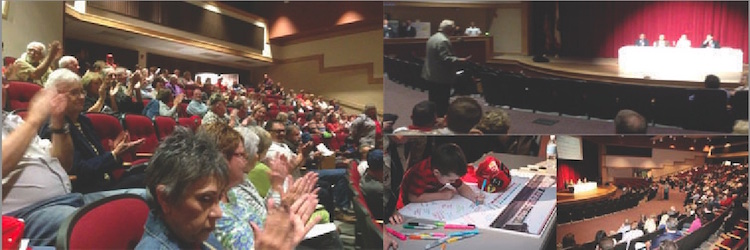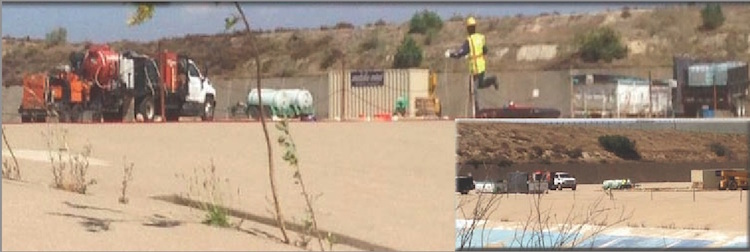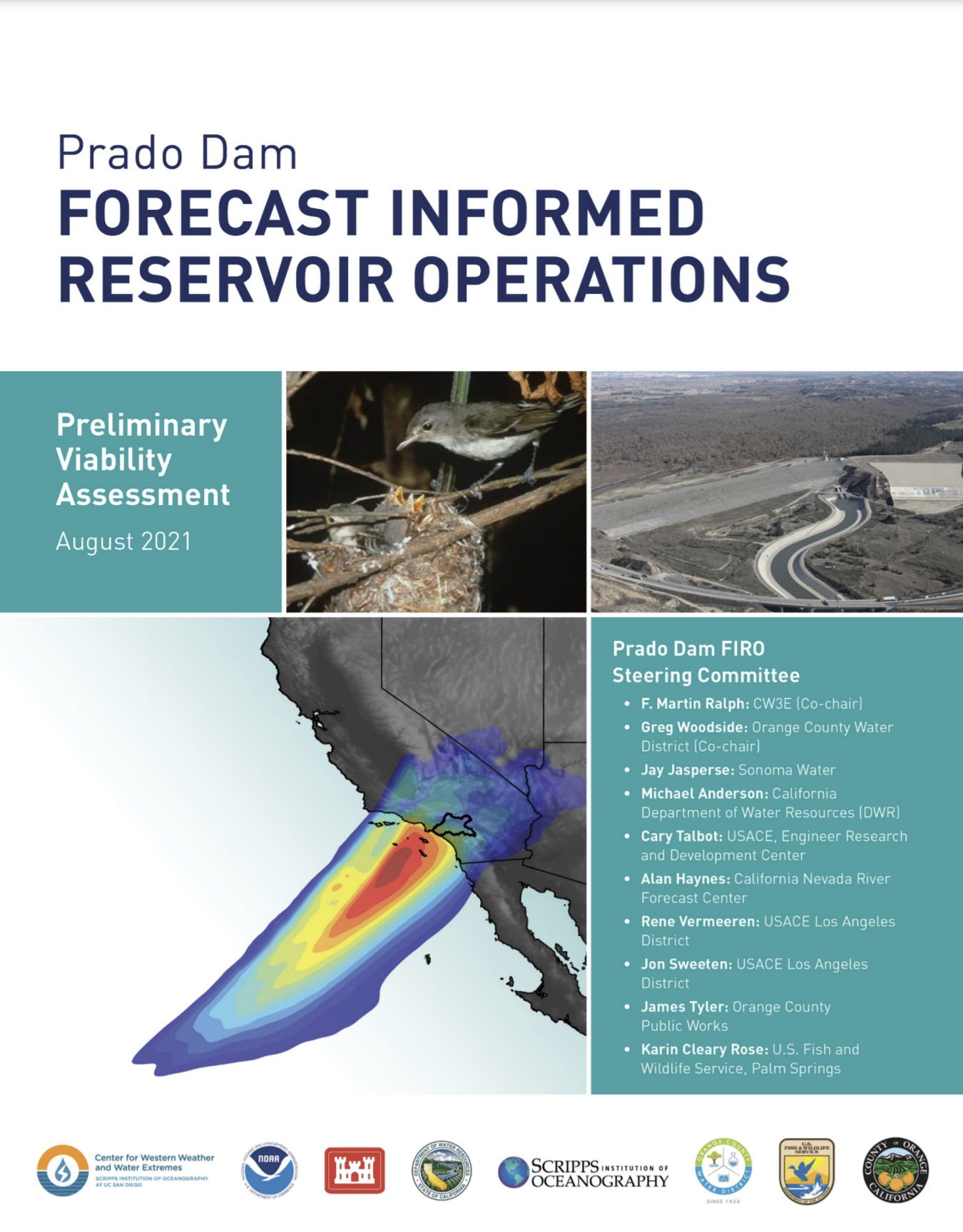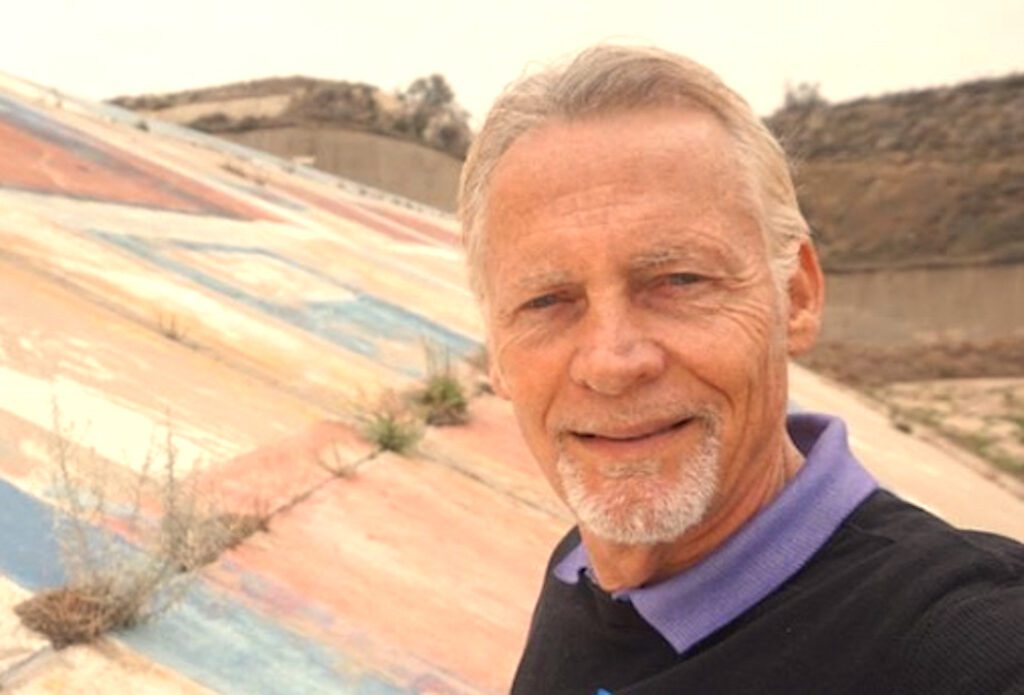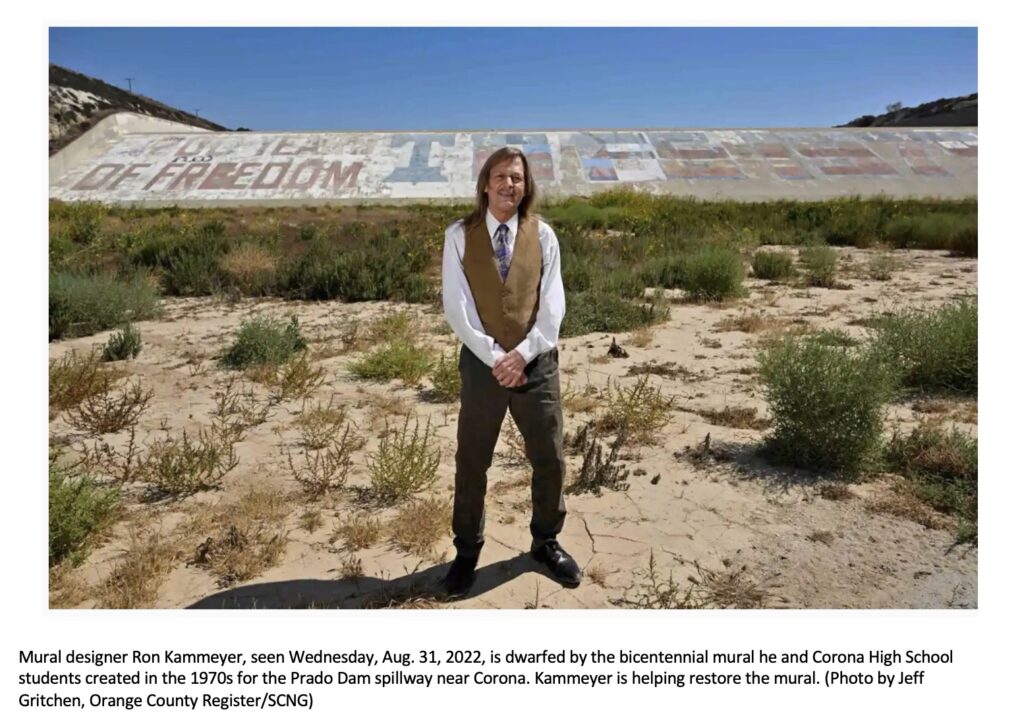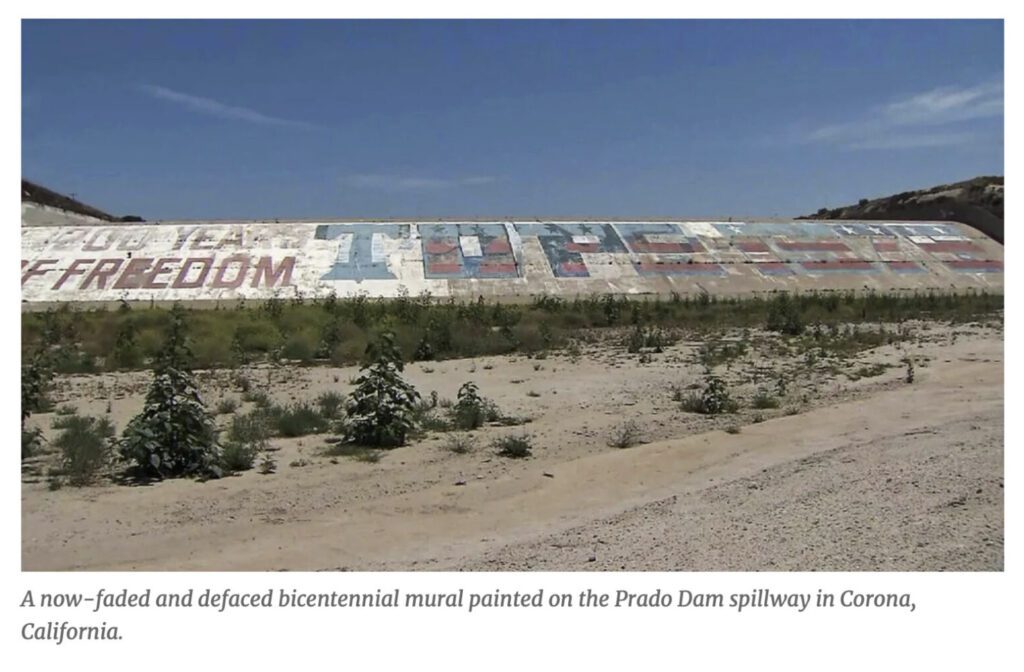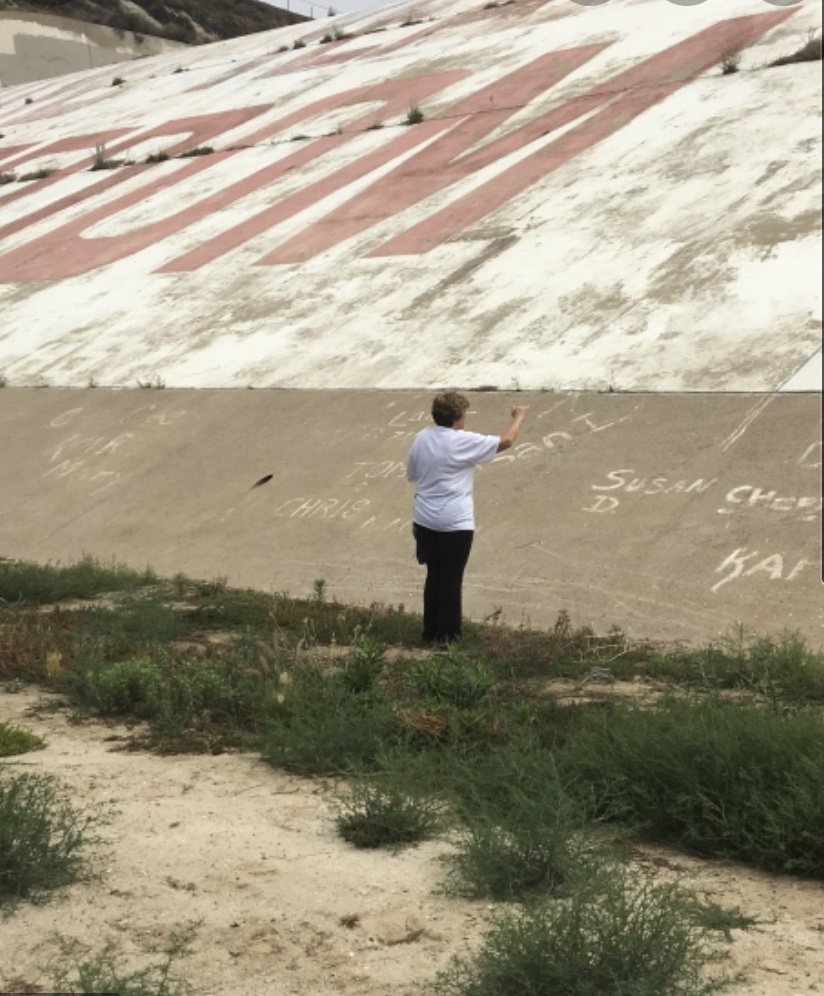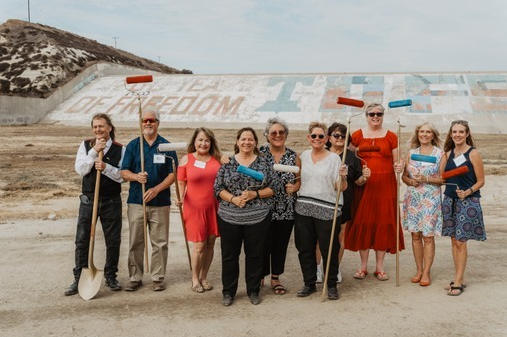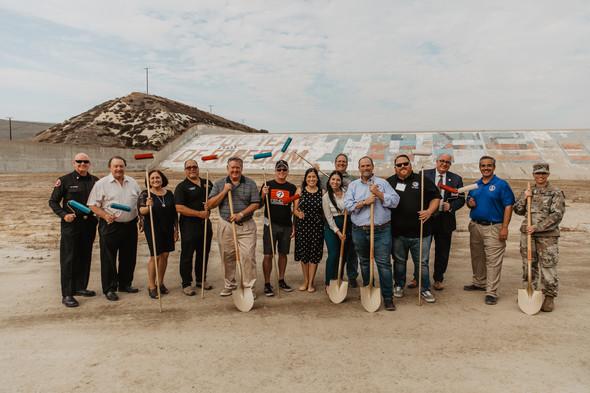 spacer
spacer
This amazing mural has stood for the honor and glory of the United States of America for many years. It is a major bastion of American Freedom and a treasure to all true Patriots. I am certain that in the minds of the Ruling Elite this monument cannot be allowed to continue to stand so majestically proclaiming freedom.
I was restoring some photos to an old post when I came across this story. I was struck with the symbolism not only of the monument itself, but with the location and the symbolism of the cities and the county involved. Most importantly I was interested in the fact that the location is in CORONA and the timeframe of this entire saga seemed uncanny to me.
The Monument celebrates the birth of FREEDOM in 1776 and the Bicentennial Celebration of that even in 1976. Now we see that the Completion date for the restoration of the monument is slated for July 4, 2023.
We know that the ruling elite want to remove all monuments to our countries past. They want to destroy all evidence of Patriotism in every nation. This particular monument celebrates the winning of our Freedom and the establishment of our nation. I just can’t see that they ever intend to allow it to be restored.
The American people have made their voices heard. They have put their money where there mouth is as well and have raised and continue to raise funds to help cover the cost of it’s restoration. It has been a long hard battle, but the people have stood. This monument holds a dear place in the hearts of not only the people who drive by it regularly on Highway 91, but really to people all across the nation to whom FREEDOM and the United States of America are to be cherished, honored and maintained!!
If you have not seen the earlier posts in this series, Check them out here:
Its a DAM Shame – Part 1 – ALERT! KEEP WATCH! Your Neighborhood is in TROUBLE
It’s a DAM Shame – Part 2 – SOLD DOWN THE RIVER BY OUR GOVERNMENT!
It’s a DAM Shame – Part 3 – Dam Safety
It’s a DAM Shame – Part 4 – OUR DAMS NATIONWIDE
It’s a DAM Shame – Part 5 – 2020 NO IMPROVEMENT
It’s a DAM Shame 2
spacer
Just for fun see how many times you can spot double 8’s in this post.
spacer
 |
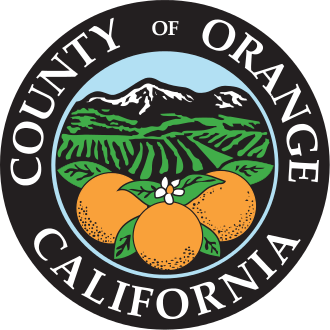 |
Although the term corona was first used in English in the 1500s, it was borrowed directly from the Latin word for “crown.” Corona is derived from the Ancient Greek κορώνη (korōnè), meaning “garland” or “wreath,” coming from a proto-Indo-European root, sker– or ker-, meaning “to turn” or “to bend.” traditional representations of crowns as radiant headbands, worn as symbols of sovereign power, to liken that power to that of the sun. Ancient gods are frequently represented wearing a crown or corona. Helios the Sun wears a radiant crown and represents power and energy and strength. Circle City: Circles are among the oldest of geometric symbols, and commonly represent unity, wholeness, and infinity. The circle is also used nearly universally to represent the sun and/or the moon, or things associated with those bodies. The astrological symbol of the sun is a circle with a dot in the middle. The same symbol is used to represent gold, which i strongly associated with the sun. Element of Spirit seen as an element equal to or superior to the physical elements of fire, air, water, and earth, is commonly represented by a circle. Circles are also seen as a protective symbol. Circles can also represent containing, keeping what is inside from been released. Orange is the new black because orange represents the warning just before death of the sun. The sun in its decline into darkness which we call night or winter time.This is the Illuminati’s color code: WHITE For each order, balance the aura, because all colors originate from white. Energy, security, stimulation, inspiration, destroys destructive energies, cleanses the aura. Provides protection when applied to others and direct. The Moon rules white. The White governs the third eye, along with indigo and silverINDIGO Meditation, psychic abilities, telepathy, mind reading, communication with spirits, absorbing knowledge telepathically. The Moon is the host to the color indigo. Indigo is the quintessential element / ether / spirit. Indigo governs the third eye, along with the colors silver and white, and the sixth chakra. |
“Orange is the New Black.” In other words. It’s the new color of death. This is why prisoners wear orange just like the victims of Isis, you know the beheadings and decapitations? This is why we find these beheadings in September which means the separation of seven. This is the end of the year which has been decapitated. It’s the same decapitated head of the goddess Kali.
Orange is the new black because orange represents the warning just before death of the sun. The sun in its decline into darkness which we call night or winter time .oranges originated in China The word sinensus comes from the Latin for China or Chinese and refers to the orange tree’s origins. Citrus sinensis is an evergreen tree. So..immortality. The five pointed orange blossom represents Satan – the pentagram. Green can also be used to incite jealousy, greed, suspicion, resentment, illness, disorder, disharmony when applied to others and direct. Mountain peaks, where heaven and earth touch, are places of divine revelation. An ascent to a mountain top is a symbol of initiation. The Mountains are the Place of the gods. Black absorbs and hides and creates confusion and chaos, new beginnings, knowledge of hidden things, is the container of light, one of the most powerful color. Use black for the self-control, time and patience. Black is also a good color to use to bring discord and confusion within the enemy. It can also be used for protection, wrap negative energy, breaking barriers and blocks, reverse and destroy negative thought forms. It ‘s better if applied to others. Black controls the base chakra, the planet Saturn, the earth element and the original religions, it means new beginning. Satanic alchemy, black represents the step into the void of meditation and transformation. |
spacer
Crown of justification or Corona Mortis/Crown of Death
In ancient Egyptian religion, the crown of justification (mʒḥ n mʒ‘ ḫrw[2]) was a wreath or fillet worn by the deceased to represent victory over death in the afterlife. Its symbolism is based on Chapter 19 of the Book of the Dead, in which the wearer is said to be “justified” by a triumph over death just as the god Osiris eventually rose above his enemies. A ritual text was recited as the dead person was crowned.[3]
The crown of justification might be made of laurel, palm, feathers, papyrus, or precious metals. It was syncretized with the solar crown of the sun god Re, and might be made of gold to mimic the properties of the sun.[
Check out my post:
FINAL SOLUTION – CROWN OF DEATH
spacer
spacer
|
|
|
 |
|
Chino, California |
Eastvale, California |
Norco, California |
| An arch is a spiritual doorway or poral. Aches are symbolic of the expansiveness of sky. were symbolic of Greco-Roman sky gods Zeus and Jupiter. They are also connected with initiation and ceremonies of renewal in many cultures. Walking through an archway represents the sloughing off of the old and moving into a new phase of life. Of course we see the Rising Sun through the Arch. Symbolic of Sun Worship. Planted fields on rolling hills. Abundance. Note the rows form V, the sign of the Horned God of witchcraft, Pan; or Baphomet, the androgynous (male and female) goat god. | Several things stand out to me on this logo. First of all, the Mountains or High places, the Sunburst rising above them and the word “Pride: in the Center at the bottom of the seal. The red ribbon, signifying blood. Prosperity of course tells us what they worship/money. This is natural since they call the area the Empire. I am not srue what to think of the three-toned snaking river flowing into the red white and blue and stars. Looks like one edge is gold…maybe gold rush plays a role in their “prosperity”? Gold is the color of wealth and power. Satan has a golden aura. Gold is the color of the Sun and the element fire | Horse symbolism in classical myth In classical mythology, horses are often depicted pulling chariots of important deities. Because of their speed and strength, horses were the ideal animals to pull the sun across the sky for Phoebus Apollo, although similar chariot-stories surround Mithras in ancient Rome and Elijah in the Old Testament. Horse a majestic and magical animal a symbol of the Spirit and the desire for freedom |
| A portmanteau word, or portmanteau (/pɔːrtˈmæntoʊ/ ( A portmanteau word is similar to a contraction, but contractions are formed from words that would otherwise appear together in sequence, such as do and not to make don’t, whereas a portmanteau is formed by combining two or more existing words that all relate to a single concept. A portmanteau also differs from a compound, which does not involve the truncation of parts of the stems of the blended words. For instance, starfish is a compound, not a portmanteau, of star and fish, as it includes both words in full. If it were called a “stish” or a “starsh”, it would be a portmanteau. |
spacer
spacer

Prado Dam May Break in Flood, Engineers Warn – Los Angeles Times
Corps officials said the interim plan to raise Prado Dam by 15.5 feet would eventually be tied in with the overall flood-control plan to raise the dam by 30 feet and offset the eventual cost of that project.

BELOW PRADO DAM – The heat wrung sweat from the human body as if it were a sponge, even when people stood still in the shade, but the team of scientists nevertheless pulled on stiff rubber boots and waders.
One of them, Larry Brown, strapped on a metal backpack connected to a pole with a ring at the end – the shocker. He would deliver a jolt to the gently flowing water of the river as he waded through it, enough to stun any fish swimming nearby. They would be scooped into buckets by his companions.
It was busy season for this year’s National Water Quality Assessment for the Santa Ana River, part of a nationwide effort to track the health of the nation’s waterways.
And despite a years-long track record, congressional funding could run dry: There might be only one more season of intensive federally funded sampling for this team of U.S. Geological Survey scientists. If so, they might have to find other funding sources to continue what has become a scientifically valuable, long-running survey of the river.
“I hope I don’t get shocked this time,” said Carmen Burton, a hydrologist who was leading the study.
“Shock therapy,” said biologist Marissa Bauer.
Orange County residents know the Santa Ana River as little more than a concrete or rock-lined channel, good for moving storm water to the ocean but not exactly a magnet for wildlife.
But naturalistic stretches of the river remain. The Santa Ana flows some 96 miles, from the San Bernardino Mountains, where it is held in check by the massive Seven Oaks Dam, to its mouth on the Orange County coast.
Sections of the river above Prado remain in a natural state, and a meandering portion below the dam also appears natural – as long as one doesn’t get too technical about it.
In reality, of course, the river’s banks are home to as many invasive, non-native species as they are to natives. Alien eucalyptus trees stand shoulder to shoulder with giant native cottonwoods. Native willows fight for space with Arundo, or giant reed, a bamboo-like invader that vexes conservationists…
Carp, bluegill, bullhead, bass: all of them temporarily paralyzed so they could be gathered with nets.
Burton hoped they might encounter a Santa Ana sucker, possibly the only native fish species left in this part of the river. But they had no such luck. Every species caught was a non-native.
Only one sucker, in fact, has turned up in seven years of surveys.
On natural parts of the river, especially at higher elevations above Prado dam, healthy numbers of the threatened suckers still exist. It’s unknown whether stretches of the river closer to Orange County still harbor suckers.
That’s one interesting finding that has emerged from the years of study. The reasons for the sucker’s decline are uncertain, but might be connected with habitat loss and competition from more numerous non-native species.
Another odd effect the scientists might be seeing, though so far with only anecdotal evidence to back it up, concerns antibiotics, sewage and parasites.
An estimated 90 percent of the water flowing down the river is highly treated sewage – clear and almost entirely bereft of contamination, but treated sewage nevertheless.
And some pharmaceutical compounds can pass through the treatment process.
Robert Fisher, a USGS biologist who sampled the river in the late 1980s, said he found fish loaded with external parasites. That was when the river was contaminated with significant amounts of dairy waste, with relatively less treated sewage flowing through.
Now a variety of sewage-treatment plants pump their effluent into the river. And external parasites, Fisher said, are rarely found on the fish that are caught.
“One of the ideas was that there are enough antibiotics in the system now that they’re actually killing the external parasites,” Fisher said.
And while that might sound like good news for the fish, many scientists worry about other, potentially harmful effects of such compounds on aquatic life-forms.
The National Water Quality Assessment, with 50 projects throughout the country and two others in California, is meant to track not only water quality, but the health of aquatic ecosystems, said Ken Belitz, a research hydrologist who is also program chief for the Santa Ana River assessment.
Scientists have been sampling the Santa Ana River since 1999. Despite the years of sampling, however, it might be too soon to draw too many sweeping conclusions about the river, he said.
“It hasn’t been that long,” he said.
Still, the extensive alteration of the river by people could yield a wealth of scientific insight.
“The Santa Ana basin provides an example of a highly urbanized watershed,” he said…
spacer
- This October, with no public debate, the Army Corp of Engineers has decided to strip off one of the largest Murals in the United States. The beloved 1776 – 1976 Prado Dam Mural in Corona, CA.
- It’s unimaginable to think that such a decision could be made without a “policy” set in place for a total, vintage restoration of the mural. But to date their only statement has been “”Any plan for follow-on actions regarding repainting of the spillway are undetermined at this time“.
- The Corp has also stated in most vague terms that “They did not want to paint a new mural until the construction on the spillway was complete so that they would not have to protect the Mural area” (which is not a real issue) What is not in this statement was the fact that The Corp will not raise the spillway until 800 to 1,000 acres are purchased on the back side of the Dam. At that point they will need to secure the allotted funds to raise the spillway.
- Here’s the clincher for those of you who think your going to be re-painting the Mural next year. When asked about a time table from the Orange County Water District and Corp, the only comment I received was due to a lack of funds (up words of $300 million) the project has now dragged on for 15 years. That’s right, it could easily take another 15 years!
How To Save The Mural
- Demand the Corp. release a policy Statement of their commitment to a full restoration, before they strip the Mural. Our friends at Congressman Calvert’s office have yet to receive such a policy statement from the Corp. So as time is of the essence it’s time to contact the Corp, local politicians and the press before it’s too late.
- Only when we get the statement, can we petition to repaint the Mural on the freshly striped concrete. With new anti graffiti paints and an organization to protect the mural from any damage can we be able to convince the Corp. and all those concerned that the Mural is ready to be restored.
- Contact the Army Core Of Engineers Greg Fuderer Gregory.A.Fuderer@usace.army.mil,
- Contact Senior Public Affairs Specialist Army Corp of Engineers. 213-479-8698
Please see web site Friends Of The Prado Dam Mural, for more info.
spacer
CHINO HILLS, Calif. (KABC) — The 74-year-old Prado Dam in Chino Hills was originally built for flood control to protect San Bernardino County from mountain runoff, and now a $2.3 billion modernization has reconfigured the dam for multiple uses.
“The number on capacity that we have here for the dam is for flood control, that’s our primary mission. So if we did have a flood threat we’ll make sure that we do have sufficient capacity to handle that flood,” said David Van Dorpe with U.S. Army Corps of Engineers. “Right now there’s not very much water behind our dam. We’re hoping that we do get a little more rain here in the spring before we go into the dry summer months.”
The drought has not produced much runoff to store water, but once the project is complete the dam will be able to store most of the rainfall and runoff.
In the years past, much of it would flow from the Santa Ana River down to the ocean, engineers said.
But the Prado Dam is best known for its patriotic mural, which was painted in 1976. It can be seen on the 91 Freeway traveling through Corona.
Upon closer inspection, the mural is faded, damaged by weather and defaced with graffiti. Dam engineers said the mural will have to be removed.
“When it was originally painted in 1976, they used lead-based paints. We can’t risk getting that lead-based paints either into our environment, or our water supply, or to the ocean so the mural it does have to come down,” Dorpe said.
A public hearing on the mural will be held at Corona High School on April 9. The removal process will begin at the end of April.
spacer
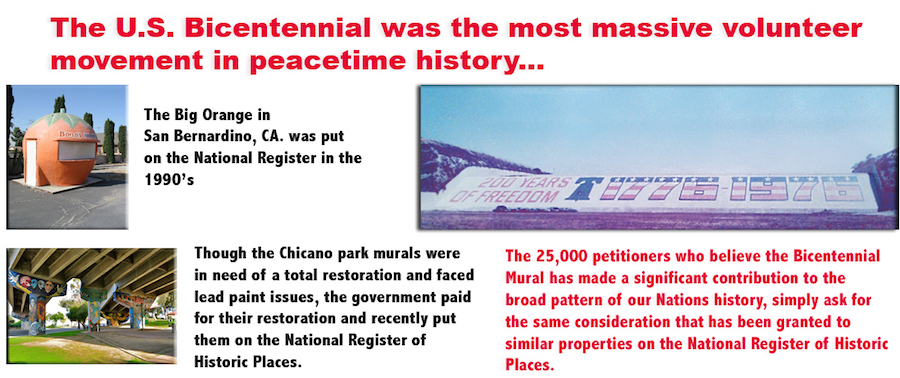
Technical Tour of the Prado Dam
ORANGE COUNTY BRANCH NEWSLETTER
ENVIRONMENTAL AND WATER RESOURCES INSTITUTE
 By Remi Candaele M.S., P.E.
By Remi Candaele M.S., P.E.
JUNE 2018

John Sweeten (USACE) discussing the improvements of Prado Dam
John Sweeten welcomed the attendees and shared the history of the dam: how it was constructed in 1941, and serves as the primary flood control facility that protects much of the Santa Ana Region in Orange County. Because of the growing urbanization, sediment accumulation, and the necessity by OCWD to store additional water in response to the drought, the embankment has recently been raised by 28.4 feet to 594.4 feet NGVD29. Upon acquiring facilities that are within the inundation area, the spillway will also be raised.

Prado Dam looking downstream

The ASCE OC EWRI Committee would like to thank John Sweeten for the insightful technical. Additional acknowledgments to the EWRI Committee (Roger Chung, Jennifer Marks, Ben Smith) for welcoming the attendees.
Feds Say Famed Corona Mural Does Not Qualify as National Treasure

A 42-year-old patriotic mural in Corona’s Prado Dam does not meet the necessary criteria for preservation as a federally protected landmark, according to the U.S. Army Corps of Engineers.
The agency on Thursday released a final determination regarding the status of the Bicentennial Mural, advising the California Office of Historic Preservation that it had concluded its study of the issue and could not find justification for retaining what’s left of the artwork under standards established by the National Historic Preservation Act.
The Corps last year issued a preliminary finding that the mural did not qualify for inclusion on the National Register of Historic Places. Additional evaluation since that time has not changed the Corps’ original determination, agency officials said.
They noted that more than 200 letters and a petition containing 30,000 signatures had been received, urging the government to find exceptions that would permit the beloved mural to be maintained. However, the Corps could not identify any means by which to meet terms of eligibility, officials said.
The first criterion for preservation would be that the edifice be at least 50 years old, and the mural falls short of that by nearly a decade, according to the Corps.
“National register eligibility demands evidence of exceptional importance for properties less than 50 years of age,” the Corps’ letter to the California Office of Historic Preservation states. “The difficulty with establishing the Bicentennial as its own significant event is that its `significance’ is derived from the significance of the event it is commemorating — the founding of the United States.”
“The Corps has … found that the Bicentennial did not have any verifiable effect on cultural or civic institutions, legislative development, social ordering, or on any other thematic subject,” the letter continues. “Commemorative properties typically honor a person, place, or event in history and achieve memorial status as the years pass. However important such persons or milestones may be, historic monuments cannot be listed in the National Register of Historic Places for their a association with the individuals or events for which they were created.”
“Because it is a commemorative property, the mural cannot be eligible unless it derives significance from aspects other than from the Bicentennial it proclaims,” according to the Corps.
The future of the mural is in doubt. The Corps still has plans to dismantle it, barring any further legal challenges.
The Riverside County Board of Supervisors, along with city councils in Corona, Eastvale and Norco, have passed resolutions urging restoration and preservation of the display.
In 2015, the Mural Conservancy of Los Angeles federally sued the Corps to halt moves toward removing the mural. A U.S. District Court judge in Riverside signed a restraining order barring any work at the site until all options for the mural’s future were explored.
The Corps, which controls Prado Dam, issued findings in 2014 that the best way to proceed was to remove the dilapidated mural, which is 106 feet tall and stretches 2,280 feet across. The deconstruction plan ran into stiff opposition from area activists, led by Ron Kammeyer, who helped create the mural, which the Corps argues poses a hazard due to lead paint decay in the spillway.
The mural, situated inside the flood control channel for the Santa Ana River, was painted in May 1976 to celebrate America’s 200th birthday. More than 30 Corona High School students spent several weekends voluntarily working on the project.
When completed, the mural read “200 Years of Freedom,” with a space depicting the Liberty Bell, followed by “1776-1976” painted in red, white and blue.
Over the years, the display has suffered weather-related decay and graffiti vandalism, blotting out some of the original scheme, though it’s still visible from portions of the Corona (71) Expressway and the Riverside (91) Freeway.
More information is available at friendsofthepradodammural.com .
spacer
Save The Largest Patriotic Mural In America

![]()
| Your signatures did it: It took time, but we never gave up and now we’re now green lit to have the Mural repainted this Spring. Our next step is to raise the funds. You can go to our donate link below, under updates. (pradodammural.com)
At six times the size of Mount Rushmore, the Bicentennial Mural at the Prado Dam has established itself as a Gateway to the Inland Empire. It was painted in 1976 by 20 girls, and 10 boys from Corona High for the 200th anniversary of the Declaration of Independence. it’s message is inspiring, not only does it “EXPRESS THE IDEALS OF OUR NATION”, it’s also been accepted as public art. But unlike other monuments of it’s kind, it has no ones face on it, so it directly impacts the observer. This beloved Mural, like the Bicentennial, brings people together with the spirit of volunteerism, friendship, and working together. Like so many have told us, “I know I’m home when I see it”. The mural’s lead paint removal is slated for early fall by the U.S. Army Corps of Engineers. It will then be restored to the original design by the Spring of 2023 using funds raised by the Bicentennial Freedom Mural Conservancy (a 501 (c) 3, the Friends of the Prado Dam Mural and contributions from local businesses. Let us share it with the world again, by donating to repaint it for the Fall of 2023. Thank you’s go out to Congressman Ken Calvert, Riverside County Supervisor Karen Spiegel, the Army Corps Engineers, and the Los Angeles Mural Conservancy, for all their hard work to bring this beloved mural back to it’s former glory! The battle is not over until the project is complete: To sign the petition, click the following link to the webpage: |
spacer
Prado, located on the Santa Ana River in Corona, is an earth-filled dam which was built in 1941. The dam is normally dry, the Corps reports, and has never experienced a large enough storm to breach the spillway.
However, the latest examination determined that a significant flooding could indeed breach the spillway, which would put the approximately 1.4 million people who live in 29 cities downstream of the dam in possible danger, along with $61 billion worth of property.
Engineers are specifically concerned about how well the concrete portion of the spillway would hold up in flood event, the Corps told The Los Angeles Times.
Cities from Newport Beach to Anaheim, including the Disneyland resort, would be vulnerable, the Times reports.
According to the Corps, a modification project is expected to begin in 2021 to “reduce the risks associated with the spillway.”
Amid heavy rain in February 2017, nearly 200,000 people who live downstream of the Oroville Dam in Northern California were forced to evacuate after authorities feared that its spillway might fail.
In December of 1963, the Baldwin Hills Dam failed, sending 292 million gallons of water gushing into several West Los Angeles neighborhoods. Five people were killed, 65 homes were destroyed and another 210 homes were damaged. That dam is now a park.
spacer
Prado Dam Failure Could Flood Dozens Of OC Communities
The 78-year-old earthen dam is all that stands between 1.4 million people and floodwaters during the next huge series of Pacific storms.

ORANGE COUNTY, CA — Federal engineers have raised an alarm that a “significant flood event,” such as a series of strong Pacific storms, could breach the spillway of the aging Prado Dam, in Orange County. Such an event has the potential to drown out dozens of downstream communities, from Anaheim’s Disneyland to Newport Beach, the Army Corps of Engineers Los Angeles District reported…
Given concerns that Prado Dam poses a flood threat to much of Orange County, the agency is collaborating with Los Angeles, Orange and Riverside counties and several dozen municipalities to develop emergency plans to implement before repairs to the dams are completed.
“A troubling theme is emerging as the Corps reviews its portfolio of large flood control systems that were built a long time ago and are now showing signs of severe stress,” said Daniel Swain, a UCLA climate scientist told the LA Times. “Federal engineers are finding that these systems are not as resilient as they thought they were and that the frequency of what were regarded as once-in-a-lifetime storms is increasing significantly.”spacer

spacer
Prado Dam Mural Restoration Promise by Original Artist Ron Kammeyer
spacer

Forecast Informed Reservoir Operations
FIRO is a reservoir-operations strategy that better informs decisions to retain or release water by integrating additional flexibility in operation policies and rules with enhanced monitoring and improved weather and water forecasts (American Meteorological Society; 2020).
FIRO is being developed and tested as a collaborative effort in the Russian River Basin (Lake Mendocino), the Santa Ana River Basin (Prado Dam), and the Yuba-Feather River Basins that engages experts and stakeholders in civil engineering, hydrology, meteorology, biology, economics and climate from several federal, state and local, universities and others. There is significant interest and support for developing FIRO at other appropriate locations in the Western U.S. and elsewhere.
To increase the efficiency of stormwater capture at Prado Dam, CW3E is collaborating with the Orange County Water District (OCWD) and U.S. Army Corps of Engineers (USACE), Los Angeles District to see if the lessons learned implementing FIRO at Lake Mendocino can be transferred and applied to the Santa Ana River Watershed. Prado Dam is located in Riverside County near the City of Corona at the upper end of the Lower Santa Ana River Canyon, about 30.5 miles (49 kilometers) upstream of the Pacific Ocean (see figure 1). This natural constriction controls 2,255 square miles (5,840 square kilometers) of the 2,450 square mile (6345 square kilometer) Santa Ana River watershed.
Prado Dam, constructed in April 1941 by the USACE, Los Angeles District, is the downstream element of the Santa Ana River flood control system and provides flood control and water conservation storage for Orange County, California. Since its construction, OCWD and the USACE have worked together to maximize the capture of stormwater behind the dam, an important source of water supply to the Orange County Groundwater Basin. Currently, OCWD is allowed to temporarily conserve up to 10,000 acre-feet (AF) of water behind the dam during flood season (Oct-Feb.) and 20,000 acre-feet of water in the non-flood season (March-Sept) (figure 2). FIRO is being studied to assess the feasibility of allowing 20,000 AF of water to be conserved behind the dam year-round.
The purpose of Prado Dam is to collect runoff from uncontrolled drainage areas upstream along with releases from other storage facilities. Generally, when the water surface elevation in the reservoir pool is below the top of the buffer pool elevation (498.0 feet during the flood season, 505.0 feet during the non-flood season), water conservation releases are made to help fill the groundwater recharge facilities. When the water level in the reservoir exceeds the buffer pool, flood control releases are made in an effort to drain the reservoir back to the top of the buffer pool as quickly and safely as possible. Recently, the existing dam and reservoir have been enlarged and the release capacity of the outlet has been increased to provide additional capacity for storage of flood waters and sediments and to take advantage of the increased downstream channel capacity. Once the ongoing construction of the Corps of Engineers’ Santa Ana River project (Reach 9 Project) is completed, the new outlet works will allow for increased flood control releases and greatly improve the level of flood protection to the communities of Orange County in the Santa Ana River flood plain.
Over the past 25 years, OCWD has captured and recharged an average of 55,000 AF of stormwater per year, with a maximum of 117,000 AF in 1995. For planning purposes, OCWD estimates that 40,000 AF of stormwater will be captured and recharged in an average year. This represents enough water for 320,000 people annually. For comparison, the cost to purchase imported water to replace this supply is approximately $40 million. Further, the decreasing reliability of imported water due to the fragile Bay-Delta, oversubscribed Colorado River, and changes in weather patterns make the capture of local stormwater even more important.
Figure 3. Precipitation over the Santa Ana River Watershed (lower blue line), outflow (orange), inflow (green), and water surface elevation (upper blue) at Prado Dam during February 2017. Source: OCWD
In February 2017, a strong atmospheric river made landfall over the Santa Ana River Watershed and produced significant precipitation. Prior to the event, the USACE released approximately 6,500 AF of previously captured stormwater to create additional storage. This water was released at a rate more than 4,000 cfs, meaning most of the water was not captured by groundwater recharge plants and flowed into the Pacific Ocean. When the AR made landfall the peak inflow to Prado Dam reached 7,000 cfs. After the event, about 900 AF on unused storage space remained, representing approximately $1 million worth of water that was not captured (figure 3).
American Meteorological Society, cited 2020: Forecast-informed reservoir operations. Glossary of Meteorology. [Available online at http://glossary.ametsoc.org/wiki/Forecast-informed_reservoir_operations.]





